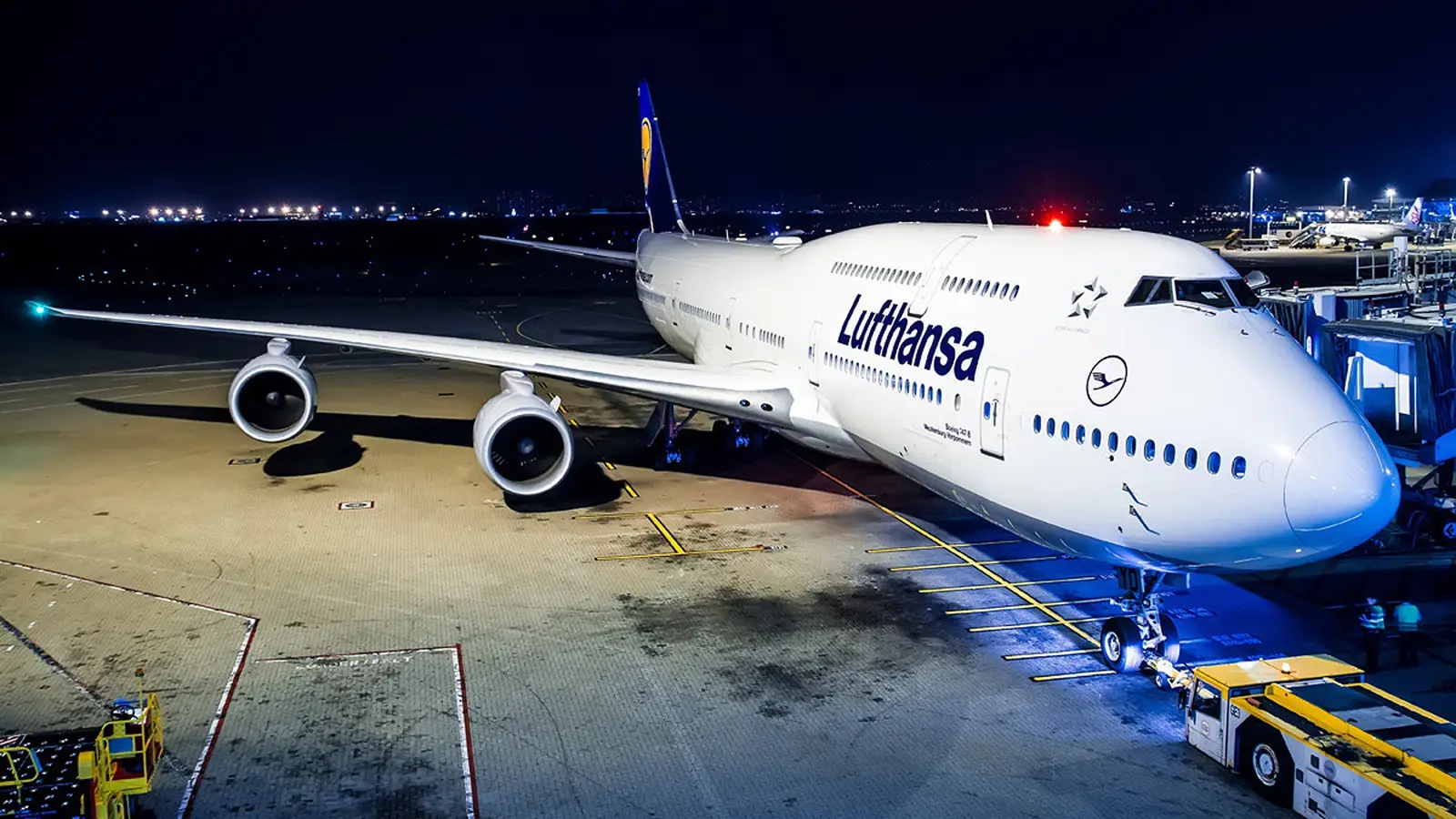
The Boeing 747, often called ‘Queen of the Skies’, revolutionized long-haul air travel by making it possible to carry hundreds of passengers across oceans in a single flight. At its introduction, it set a new standard for range, speed, and passenger comfort, effectively transforming international travel into something more accessible. However, the very size and complexity that made the 747 groundbreaking have also contributed to its decline in the US passenger market. As airlines shifted towards more flexible and cost-effective options, the need for the 747 began to diminish.
The disappearance of the 747 from the US domestic market also highlights broader trends in airline decision-making. Modern carriers prioritize fuel efficiency, lower maintenance costs, and adaptability to changing passenger trends. The 747’s four engines and large seating capacity, which were once a competitive advantage, are now viewed as financial and logistical constraints. In this way, the aircraft’s decline reflects not just technological change, but also the evolution of airline business strategy in response to passenger demand and industry economics.
Jumbo Jets No Longer Fit For US Market
To put it simply, the Boeing 747 is no longer practical for the US domestic market due to the realities of the market. Jumbo jets like the 747 and the Airbus A380 were designed during a time when airline networks revolved around ‘hub-and-spoke travel’, with passengers funneled through a few major airports and loaded onto massive aircraft for long-haul journeys.
In that environment, it made sense to have a plane that could carry 400–500 people at one time across the oceans. But alas, the industry trend has shifted. Over the last two decades, passenger demand has become more spread out, with airlines increasingly favoring ‘point-to-point’ travel using smaller, more efficient wide-body jets. This change means there is less need for extremely large aircraft in the US domestic market, especially when those aircraft come with higher operating costs.
The Boeing 747 also faces the issue of fuel consumption. Four-engine aircraft burn significantly more fuel than modern twin-engine designs. Even if the 747 can technically cross the same distances as a Boeing 787 or Airbus A350, it will do it less efficiently, impacting the airlines’ profit margins. Airlines cannot afford to consistently fill hundreds of extra seats simply to make the numbers work. In an industry where fuel can account for 20–30 percent of operating costs. The result is that while the 747 remains iconic, it no longer serves the economic and logistical realities of the modern US market.
Higher Fuel Consumption On Boeing 747s
When airlines decide to add aircraft to their fleet, the process goes far beyond nostalgia or tradition. Fleet planning is one of the most critical and strategic decisions an airline can make. Aircraft that consume less fuel per seat mile are much more attractive to airlines, particularly as environmental concerns and carbon regulations become more pressing. Four engines on the 747 inevitably mean higher fuel consumption compared to two engines on aircraft such as the Boeing 787 or Airbus A350.
The second factor that influences this decision is demand forecasting. Airlines must carefully estimate how many passengers they can reliably expect on a route. While a 747 may offer 400–500 seats, filling those consistently can provide a challenge. Flying with empty seats dramatically reduces profitability, so airlines often prefer smaller planes that are easier to fill more consistently. This is particularly relevant to the US market, where competition is fierce, and passenger demand is spread across numerous cities rather than concentrated on just a few mega-hubs.
A third factor is maintenance and operating flexibility. Larger and older aircraft generally require more complex and costly maintenance. The 747’s engines, systems and sheer size make it more demanding to service compared to modern designs. Twin engines not only need fewer checks but also simplify scheduling and operations because they can be deployed on a wider variety of routes. Runway capability is also a contributing factor, as not all airports can support the weight, wingspan or gate requirements required of a 747.
Twin-Engined Jets Preferred Over Quad-Engined Jets
Industry experts, analysts and airline executives have weighed in repeatedly on why the 747 faded out of the US passenger service, and their comments underscore the themes of cost, demand, and changing networks. A Simple Flying analysis of quad-engine aircraft notes,
“Quad-engines disappeared from US airline fleets largely because twin-engine wide bodies deliver comparable range and capacity at significantly lower cost.”
Executives from US airlines have echoed this view. Over the years, mergers and acquisitions have transformed the US airline industry, creating the four largest carriers by fleet size: Delta Air Lines, American Airlines, United Airlines and Southwest Airlines. While these airlines have expanded through consolidations, their average aircraft sizes have generally decreased, and current trends suggest smaller, more efficient jets continue to dominate.
Whilst American Airlines led the way by retiring the 747 from its fleet, Delta Air Lines temporarily became the last US carrier operating the 747 after inheriting several aircraft through its merger with Northwest Airlines. However, this was also short-lived. Delta concluded its final 747 passenger flight in December 2017, marking the complete exit of the Boeing 747 from the US passenger service.
A350 Provides Better Passenger Experience
In its prime, the Boeing 747 could carry 400 passengers in high-density with a mixed class configuration on many long-haul routes. However, the size of the aircraft provides many constraints and challenges, which become a limiting factor for airlines. For example, the Boeing 777-300ER is currently the largest aircraft in US passenger service. The smaller size allows for a passenger number of 365 and gives airlines flexibility to fit into a wider range of airports and also adjust seating due to seasonal demands.
Airlines such as American, United and Delta now rely heavily on twin-engine wide bodies such as the Boeing 787 and Airbus A350 due to its range and also passenger comfort. According to this Reddit thread, passengers notice and feel differently after traveling on a modern A350, where increased humidity and quieter engines all contributed to a better passenger experience.
Finally, the 747’s demise is related to the ease of availability of replacement parts and ongoing manufacturing support. As production of new 747s has ended, airlines face higher costs and longer lead times for components, from engines to avionics. In contrast, newer engines like the Boeing 777 are in active production lines and robust global supply chains, making maintenance, upgrades, and part replacements easier and more predictable.
The 747 Is Still Exporting Cargo Worldwide
While the 747 has disappeared from US passenger airlines, it has not vanished entirely. One of the most significant exceptions is in the cargo sector. The 747’s enormous capacity and its ability to handle oversized freight make it invaluable for global shipping. Carriers like Atlas Air and UPS continue to operate a fleet of 747 freighters, and Boeing has launched the 747-8F, a freighter-specific version, to serve this niche. In cargo, where volume matters more than passenger comfort or fuel efficiency per seat, the 747 remains competitive and respected.
There are also a handful of government and special-use cases. The most famous example is Air Force One, the US Presidential aircraft, which is based on a modified Boeing 747-200B. These planes continue to serve in their specialized role, and replacements currently being built are also based on the 747-8 platform. Charter services and VIP operators have occasionally used passenger 747s as well, though these are rare.
The 747 is not obsolete in every role. Some airlines still fly the 747 internationally, although it is not currently in the US domestic market. It’s size and cargo capabilities remain valuable in specific contexts. However, for mainstream US passenger airlines competing in mainstream commercial flights, those same qualities have become liabilities rather than strengths.
The End Of A Historic Chapter
The story of the Boeing 747 in US passenger aviation is both inspiring and instructive. It began as a bold leap forward, bringing affordable long-haul travel to millions and reshaping how people experienced the world. For decades, it was unmatched in scale and prestige. Yet the very qualities that made it iconic — its size, its four engines, its grandeur — eventually became reasons for its retirement.
As travel patterns shifted and efficiency became king, the 747 could no longer compete. Today, the 747 continues to grace the skies in a cargo-carrying capacity, government roles and with a handful of international airlines. Its absence in the US domestic market is not a sign of failure, but of progress and a reminder that aviation must adapt to survive.
In an industry that is defined by efficiency, the aircraft that thrive are those that deliver flexibility, economic satisfaction and sustainability. The Boeing 747 will always hold a place in history, but the skies it once ruled now belong to a new generation of aircraft.



